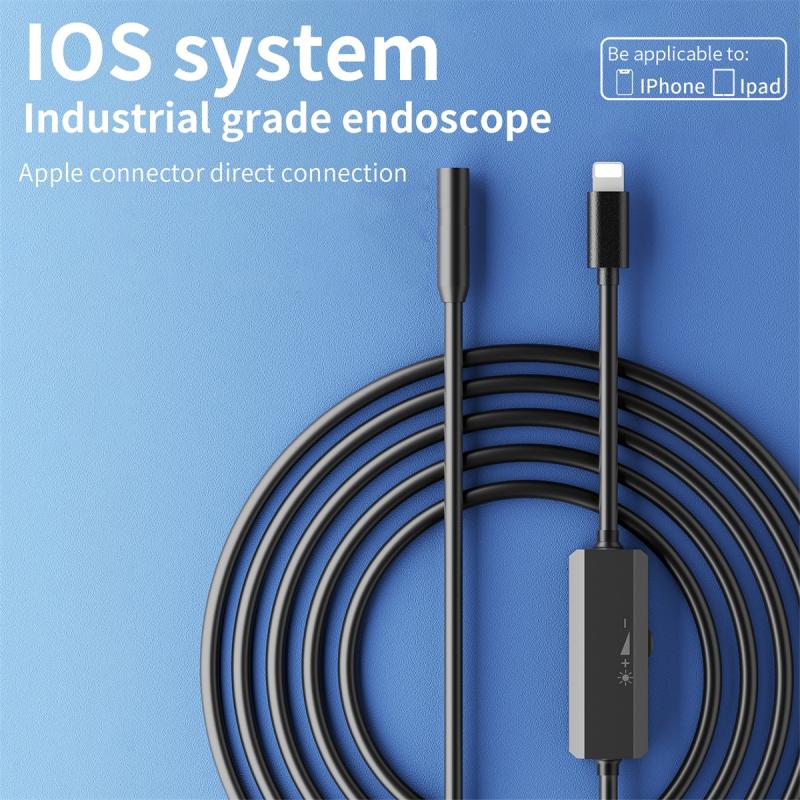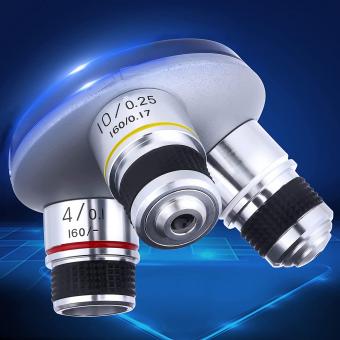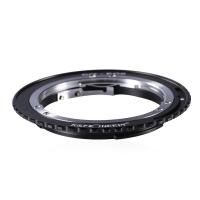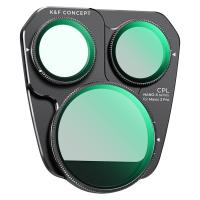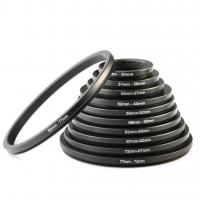Where Are Light Microscopes Used ?
Light microscopes are used in various fields such as biology, medicine, materials science, and education. They are commonly used in biological research laboratories to study cells, tissues, and microorganisms. In medicine, light microscopes are used for diagnostic purposes, such as examining blood samples or analyzing tissue biopsies. They are also used in educational settings, allowing students to observe and learn about microscopic structures. In materials science, light microscopes are used to analyze the composition and structure of materials at a microscopic level. Overall, light microscopes are versatile tools that enable scientists and researchers to visualize and study a wide range of samples and specimens.
1、 Biological research and analysis
Light microscopes are widely used in biological research and analysis. These microscopes use visible light to illuminate the specimen and magnify it, allowing scientists to study the structure and behavior of cells and tissues. They are essential tools in various fields of biology, including cell biology, microbiology, genetics, and pathology.
In cell biology, light microscopes are used to observe and study the structure and function of cells. They enable scientists to visualize cellular components such as organelles, cell membranes, and cytoskeletons. By using different staining techniques, researchers can also study specific cellular processes, such as cell division or protein localization.
Microbiologists use light microscopes to study microorganisms, such as bacteria, fungi, and protozoa. These microscopes allow them to observe the morphology and behavior of these organisms, as well as study their interactions with their environment. Light microscopes are also used in genetics to observe and analyze chromosomes, DNA, and RNA.
In pathology, light microscopes are used to examine tissue samples and diagnose diseases. Pathologists can identify abnormal cellular structures or patterns that indicate the presence of diseases such as cancer. Light microscopes are also used in forensic science to analyze biological evidence, such as blood or hair samples, to aid in criminal investigations.
The latest point of view in the use of light microscopes is the integration of advanced imaging techniques. For example, confocal microscopy allows researchers to obtain high-resolution, three-dimensional images of cells and tissues. Fluorescence microscopy enables the visualization of specific molecules or structures within cells by using fluorescent dyes or proteins. These advancements have revolutionized biological research by providing more detailed and precise information about cellular processes and interactions.
In conclusion, light microscopes are extensively used in biological research and analysis, playing a crucial role in understanding the structure and function of cells and tissues. The integration of advanced imaging techniques has further enhanced their capabilities, allowing scientists to delve deeper into the intricate world of biology.

2、 Medical diagnostics and pathology
Light microscopes are widely used in various fields, including medical diagnostics and pathology. These microscopes use visible light to magnify and observe samples, allowing for detailed examination of cells, tissues, and microorganisms. In medical diagnostics, light microscopes play a crucial role in identifying and diagnosing diseases.
In pathology, light microscopes are used to study tissue samples obtained from biopsies or surgical procedures. Pathologists use these microscopes to examine the cellular structure of tissues, identify abnormalities, and make accurate diagnoses. This is particularly important in the detection and characterization of cancerous cells, as well as other diseases such as infections or autoimmune disorders. Light microscopes enable pathologists to analyze the size, shape, and arrangement of cells, helping them determine the nature and severity of the disease.
Moreover, light microscopes are also used in medical research to investigate the mechanisms of diseases and develop new treatments. Researchers utilize these microscopes to study the effects of drugs on cells, observe cellular processes, and explore the interactions between cells and microorganisms. By understanding the cellular and molecular basis of diseases, scientists can develop targeted therapies and improve patient outcomes.
In recent years, there have been advancements in light microscopy techniques, such as confocal microscopy and fluorescence microscopy. These techniques allow for even higher resolution and the visualization of specific molecules within cells. This has further expanded the applications of light microscopes in medical diagnostics and pathology.
Overall, light microscopes are indispensable tools in medical diagnostics and pathology. They provide valuable insights into the cellular and molecular aspects of diseases, aiding in accurate diagnosis, treatment development, and research advancements.

3、 Education and teaching in life sciences
Light microscopes are widely used in education and teaching in life sciences. These microscopes are essential tools for students and researchers to observe and study various biological specimens at a cellular and subcellular level. They are commonly found in classrooms, laboratories, and research facilities, providing a hands-on learning experience for students and enabling them to explore the microscopic world.
In education, light microscopes are used to teach fundamental concepts in biology, such as cell structure, tissue organization, and the diversity of organisms. Students can examine prepared slides or create their own slides to observe different types of cells, tissues, and organisms. By using light microscopes, students can visualize and understand the intricate details of cellular structures, such as the nucleus, mitochondria, and cell membranes.
Furthermore, light microscopes are also used in research and advanced studies in life sciences. Researchers utilize these microscopes to investigate various biological processes, such as cell division, cellular interactions, and the effects of different treatments or interventions on living organisms. They can observe and analyze the behavior and characteristics of cells and tissues under different conditions, aiding in the development of new drugs, therapies, and diagnostic techniques.
In recent years, there have been advancements in light microscopy techniques, such as confocal microscopy and fluorescence microscopy. These techniques allow for even higher resolution and more detailed imaging of biological specimens. They have revolutionized the field of life sciences by enabling researchers to study dynamic processes within living cells and tissues in real-time.
Overall, light microscopes play a crucial role in education and teaching in life sciences. They provide a foundation for understanding the complexity of living organisms and contribute to advancements in research and technology. As technology continues to evolve, light microscopes will continue to be an indispensable tool in the field of life sciences.

4、 Quality control and industrial applications
Light microscopes are widely used in various fields, including quality control and industrial applications. These microscopes utilize visible light to magnify and observe samples, allowing for detailed analysis and examination.
In quality control, light microscopes are essential tools for inspecting the quality and integrity of products. They are used to examine the surface of materials, such as metals, plastics, and textiles, to detect any defects or imperfections. By magnifying the sample, technicians can identify flaws like cracks, scratches, or uneven surfaces that may affect the product's performance or appearance. This helps ensure that only high-quality products are released to the market, reducing the risk of customer dissatisfaction and product recalls.
In industrial applications, light microscopes play a crucial role in research and development, as well as in the production process. They are used to analyze the structure and composition of materials, such as metals, polymers, and ceramics. By studying the microstructure of these materials, scientists and engineers can gain insights into their properties, such as strength, durability, and conductivity. This information is vital for designing and manufacturing products with specific characteristics and performance.
Moreover, light microscopes are also used in the field of biology and life sciences. They are employed to study cells, tissues, and microorganisms, allowing researchers to observe their structure, behavior, and interactions. This knowledge is fundamental for advancing our understanding of biological processes and developing new treatments and therapies.
In recent years, there have been advancements in light microscopy techniques, such as confocal microscopy and fluorescence microscopy. These techniques enable researchers to visualize and study samples with higher resolution and specificity. Additionally, the integration of digital imaging and computer analysis has further enhanced the capabilities of light microscopes, enabling automated image processing and quantitative analysis.
Overall, light microscopes are indispensable tools in quality control and industrial applications, providing valuable insights into the structure and properties of materials and facilitating scientific research and development.
